Bespoke Dashboard
How to access your bespoke dashboard in Starred
You'll find a direct link to your Bespoke Dashboard(s) in your navigation bar on the left side of the screen.
If you have multiple bespoke dashboards, they will all be listed:
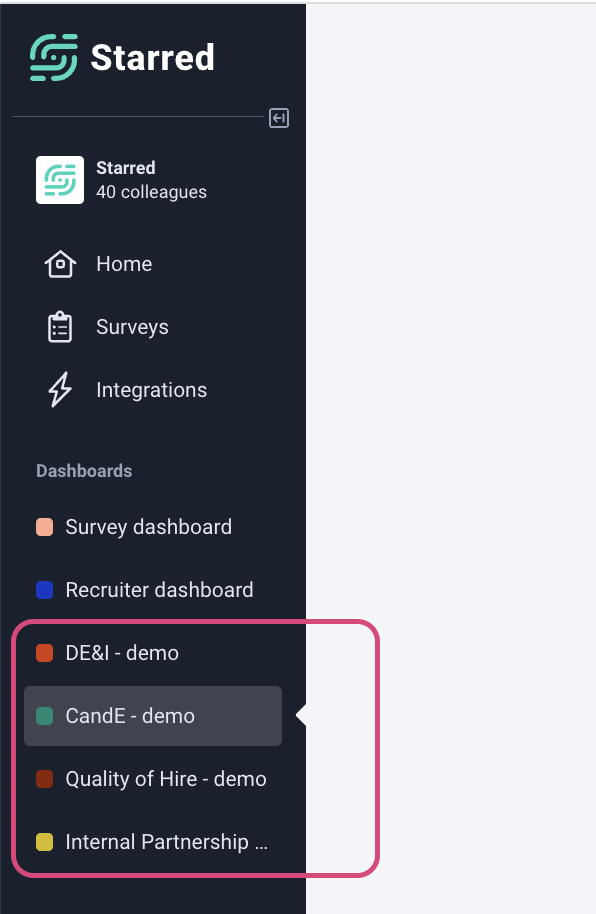
Note: this feature is only available for users with access to Bespoke dashboards. Contact your Customer Success Manager to learn more.
Bespoke dashboard insights
Contrary to your survey dashboards, your Bespoke Dashboard offers aggregated results from all your surveys.
In the screenshots below you can see an example of how a Bespoke Dashboard might look like:
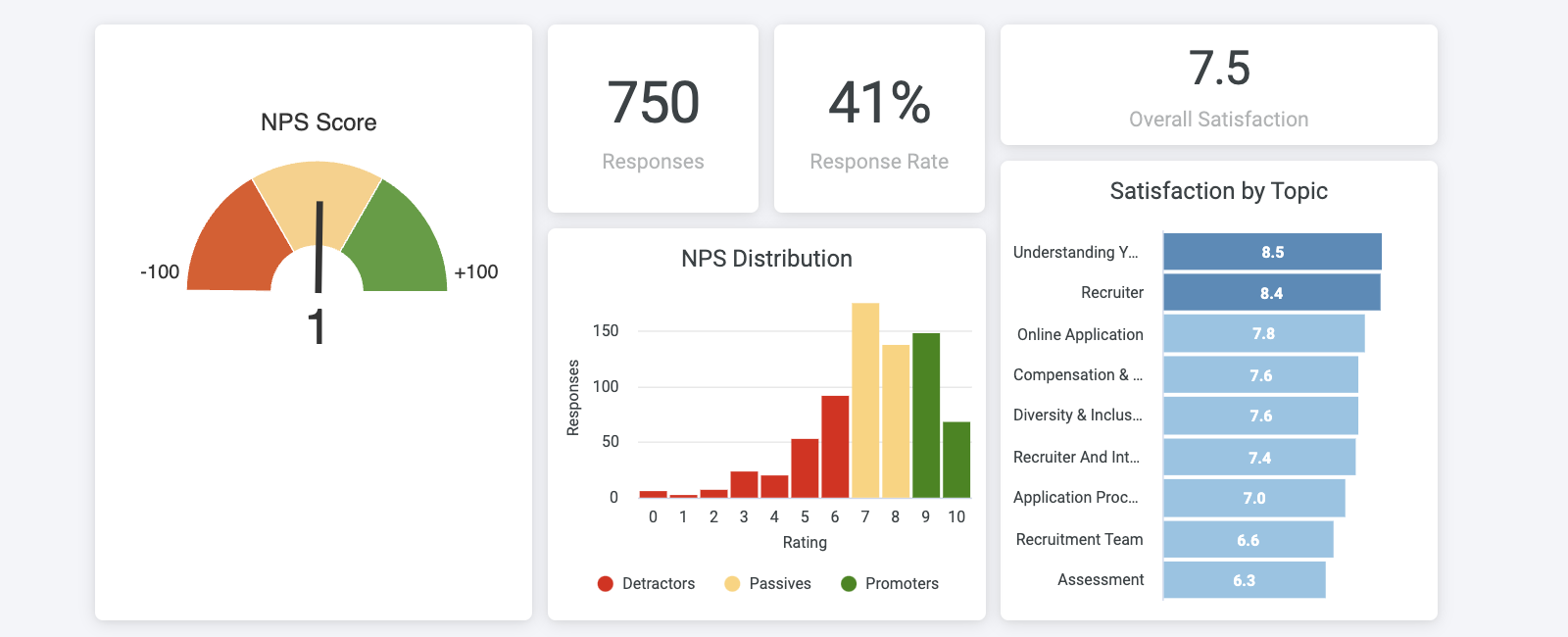
You'll notice boxes with data regarding:
- NPS score, NPS distribution
- Nr. of responses and response rate
- Overall satisfaction and satisfaction by topic: these charts refer to the average scores that you have received in your star ratings and grades questions.
Please note: the subjects are displayed based on the question description, not the title of the question.
That is because a question with the title "feedback" could relate to different stages of the recruitment process: feedback from the assessment, feedback from an onsite interview, and so on.
This could mean that you can have different "feedback" subjects listed in the chart. You can find out the question that the subject refers to by hovering over the subject title ("Engagement" in the example below):
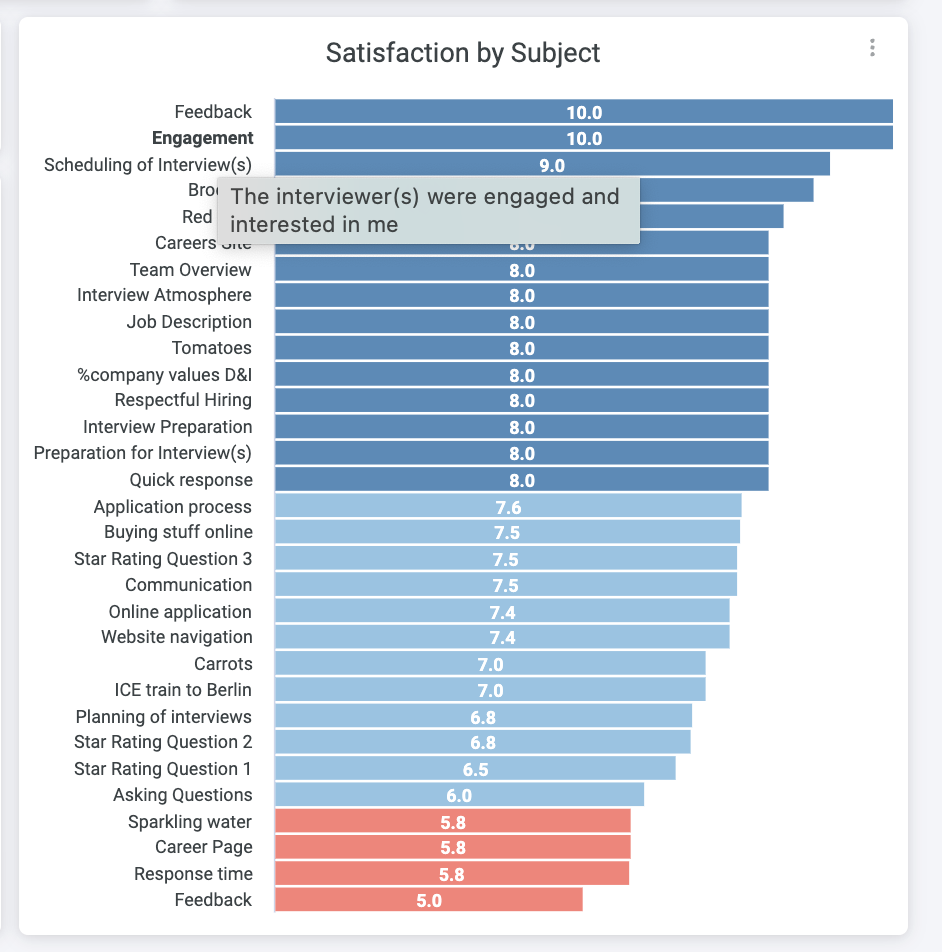
If you wish to group all questions together under one subject (let's say, all "feedback" questions) you can update the question descriptions so they match.
As we said, results are aggregated here, so you'll be able to filter by survey if you wish to:
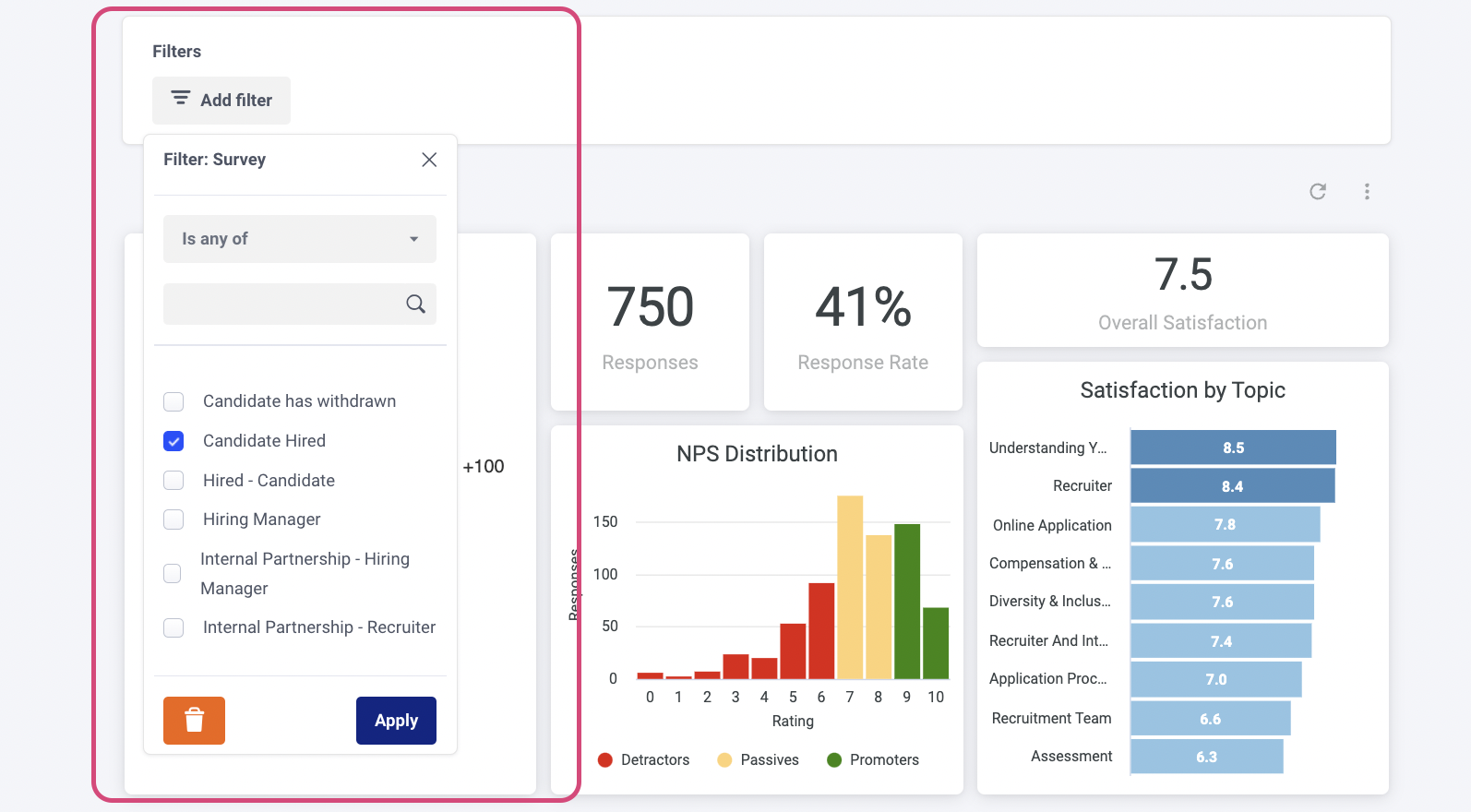
Otherwise, the results you'll see will divide your data based on hired, rejected or withdrawn candidates.

Usually, Bespoke Dashboards will also display comments received to your NPS and ratings questions in a very easy to navigate way. Below, an example of how your comments to the NPS question are divided into Promoter, Passive and Detractor comments.

You can download results for each part of your Bespoke Dashboard and the comments are no exception! We actually do recommend exporting your comments on a regular basis to go through them.
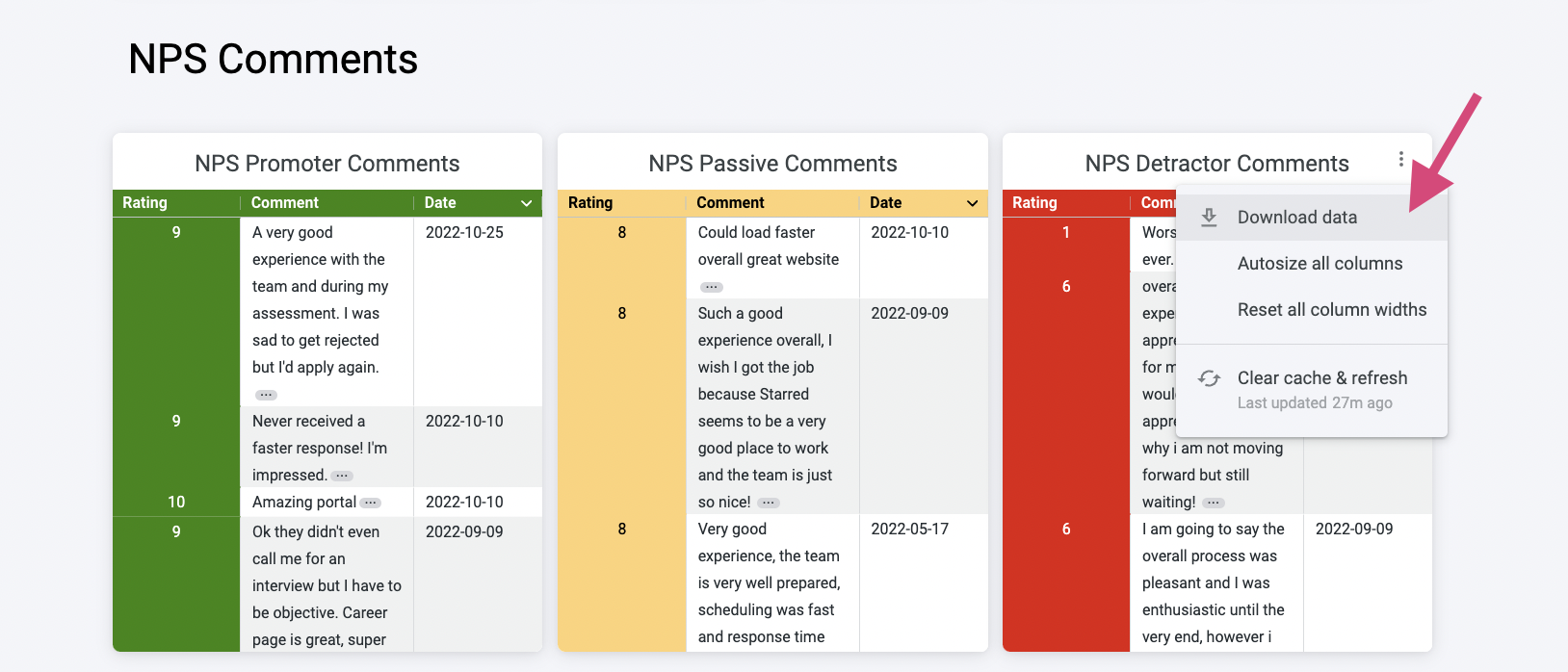
If you'd like to start analyzing your comments, we have a guide on the Support page to get you started.
How to filter your dashboard
Immediately below the menu, you'll find the filter bar.

Here, like in your survey dashboards, you're able to apply filters to navigate through your results. The filters available to you depend on your dashboard and custom fields. In the example below you can see a few examples of filters:

In case you'd like to add any filters to your dashboard, please get in touch with your Customer Success Manager.
The entire dashboard filters dynamically when you select one of the values within a filter. You can add and remove filters in your Bespoke Dashboard in the same way you can do with your Survey dashboards, so feel free to read thorough our article on how to filter in the dashboard to learn more.
The same goes for creating saved filters: if you know that there are filters you use all the time, you might want to save them for easier analysis of your results! Check out our dedicated Support article to learn how to create saved filters.
*Note: depending on your access level (Data Access Policy) you'll be able to filter on all or only a selection of filters. For more information see Dashboard Access below.
Dashboard Access
Only admin users can give other users access to the Bespoke Dashboard. To do so, navigate to your Colleagues section in Starred and find the user profile you need to edit.
You can give access to one or multiple dashboards for a specific colleague.

Please note that the Data Access Policy a user is assigned to determines which data (filters) a user has access to. To learn more, please see Data Access Policies.
In the example below, a user is added to a Data Access Policy that consists of a custom field 'Recruiter', with value 'David'.
This Data Access Policy affects the results that the user will see in the bespoke dashboard. The results are in fact already filtered out according to that filter, which can't be removed by the user.
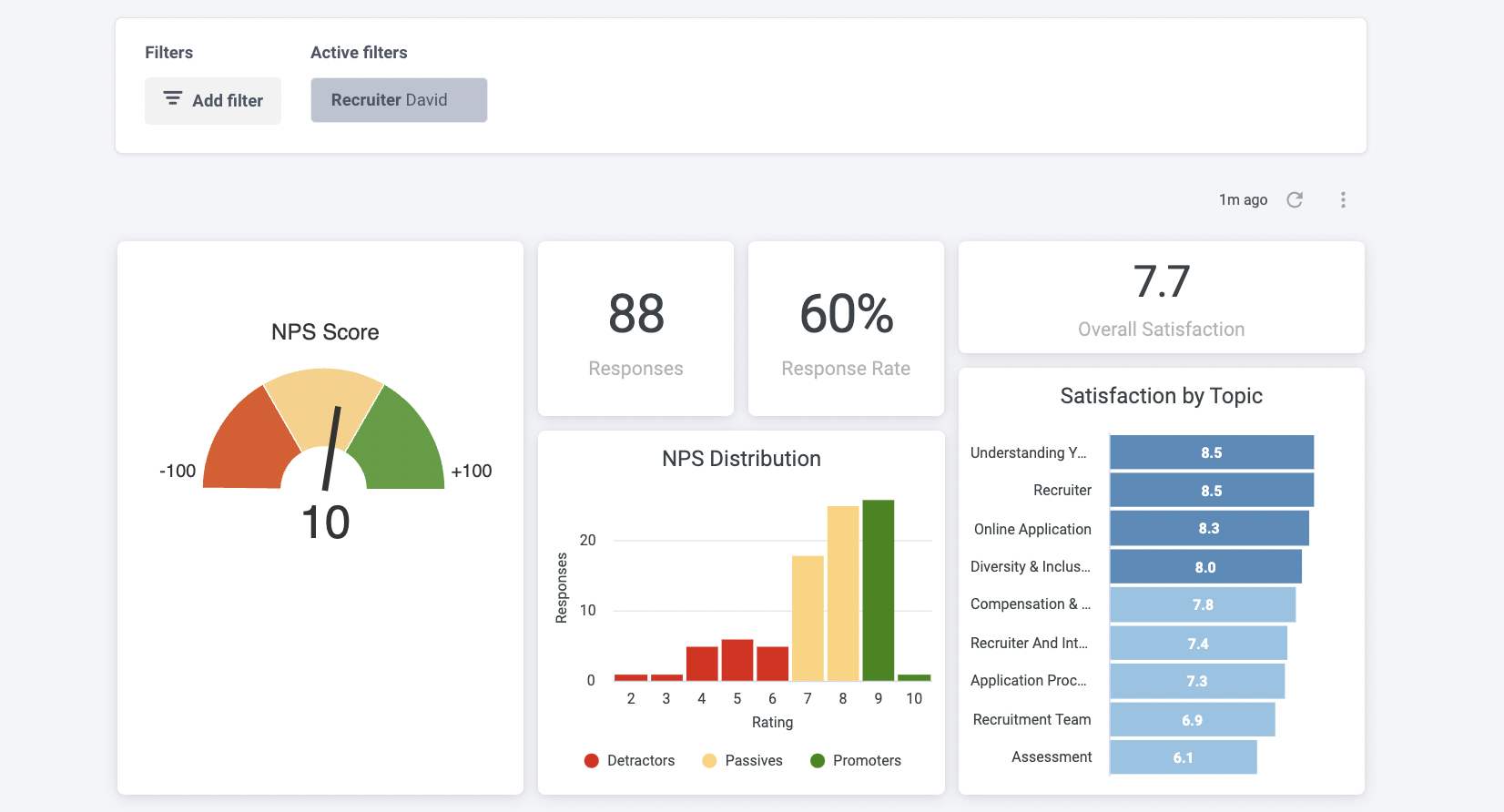
Updated 3 months ago
